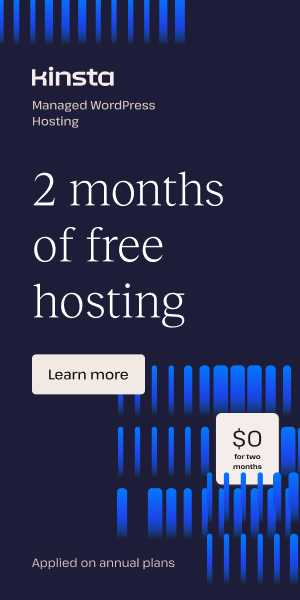Advanced Figma Techniques for WordPress
Unlocking the Power of Components and Responsive Design in Figma
When diving deeper into advanced Figma tips, mastering components and responsive design techniques opens up impressive potentials for professionals aiming to deliver pro design for WP projects. Components in Figma are reusable design elements that can be updated globally, which maintains consistency and drastically speeds up iterations on larger projects. By modifying a master component, all linked instances update automatically—eliminating repeated tweaks and potential errors.
In addition, Figma’s Auto Layout feature empowers designers to build adaptive and responsive layouts that adjust according to content and screen sizes. This is crucial for WordPress sites intended to deliver a seamless mobile experience across devices, saving designers from manually creating multiple layouts for each breakpoint. This feature integrates well with design systems, fostering scalable, complex designs aligned with development requirements.
Leveraging Design Systems for Consistency and Efficiency
Another key advanced technique involves embedding design systems into your workflow. Design systems in Figma encapsulate a collection of components, styles, and tokens that ensure your project stays uniform, whether you are working solo or as part of a team.
- Reusable Styles: Define and apply color schemes, typography, and effects that propagate changes globally when updated.
- Icon Systems: Build consistent iconography by creating and sharing icon sets as components.
- Design Tokens: Utilize variables for colors, typography, and spacings for easy theme adjustments and platform unification.
Implementing these strategies optimizes collaboration between designers and developers and enables more reliable and maintainable Figma2WP Service conversions.
Expert Methods for Converting Complex Figma Designs into WordPress
Transitioning from high-fidelity Figma prototypes to fully functional WordPress websites involves a blend of technical expertise and methodical workflows. There are several complex conversion methods practiced by seasoned developers:
1. Custom Theme Development via HTML/CSS Export
Figma designs can be exported as HTML and CSS code and then integrated into custom WordPress themes. This method grants full control over the design fidelity and site functionality. It involves:
- Using Figma’s code export capabilities or third-party tools to extract semantic HTML and CSS.
- Integrating this code into WordPress theme files, primarily PHP templates, to enable dynamic content rendering.
- Manually adding WordPress-specific functionality like loops for blog posts or WooCommerce product displays.
This option suits designers who demand pixel-perfect accuracy and developers comfortable with WordPress’s theme architecture. You can read detailed guidelines on this approach at Wisdmlabs.
2. Utilizing Automation Plugins
Automated tools, such as the Yotako Figma to WordPress plugin, offer intriguing possibilities for designers looking to accelerate delivery. These plugins:
- Analyze your Figma files and generate WordPress themes based on the layout and styles.
- Support responsive designs automatically if you use Figma’s Auto Layout properly.
- Are well suited for simple to moderate complexity projects but may require manual adjustments on export.
These tools lower the technical barrier, making WordPress site building more accessible for designers who do not code extensively. However, for intricate layouts and special functionalities, a developer’s involvement remains crucial. Learn more about these tools and their capabilities on Kinsta’s comprehensive guide.
3. Combining Page Builder Plugins with Figma Asset Export
An increasingly popular approach combines Figma asset export with WordPress drag-and-drop page builders like Elementor or WPBakery. This process involves:
- Exporting images, SVG icons, and typography styles directly from Figma.
- Recreating the design layout visually within the page builder environment.
- Customizing each element’s styling to closely match the Figma design.
This method is favored when speedy deployment is necessary without compromising visual appeal and user interaction quality. It also accommodates non-developers who want to build or iterate on WordPress projects rapidly. More on this hybrid approach can be found in articles by Wisdmlabs.
Real-World Applications and Case Studies
Figma’s advanced techniques and sophisticated conversion workflows have made waves in professional environments. For example:
- Agency Portfolio Revamps: Design agencies refresh clients’ websites using Figma’s design systems and reusable components for branding continuity, then deliver clean WordPress themes developed through HTML/CSS exports.
- eCommerce Platforms: Online stores utilize Figma’s Auto Layout for responsive product pages and employ plugins like Yotako for speeding up prototyping to deployment cycles.
- Corporate Intranets: Multi-layered, data-driven dashboards are designed with complex components and converted by expert developers, enabling tailored WordPress themes with extensive backend integration.
These cases reflect how mastering advanced Figma tips and proficient WordPress integrations can improve project quality, development speed, and maintainability.
Further Learning and Resources for Mastery
To continuously elevate your skills, consider dedicated courses and webinars focusing on advanced Figma functionalities and WordPress theme conversion:
- Designlab’s Advanced Figma Course – Deep dives into flexible layouts, reusable components, and design tokens.
- ATEN Design Group’s Webinar – Insights into component-based web design and building powerful Figma systems.
- WordPress Plugin Repository – Explore plugins that aid in Figma-to-WordPress conversions, page building, and customization.
Enhance Your WordPress Projects with Figma Expertise
Leveraging advanced Figma techniques alongside expert WordPress development strategies elevates your design workflow and final product quality. Whether you’re a designer seeking precise control or a developer integrating dynamic WordPress themes, mastering these processes is indispensable for professional-grade websites.
For a seamless transition from design to a fully functional WordPress site utilizing industry-best practices, contact us at Figma2WP Service and explore tailored solutions crafted for your unique needs in the USA, UK, and Canada markets.
More From Our Blog
Elevating Your Online Presence Through Engaging Social Design and Community WP Building a vibrant community WP (WordPress) site is increasingly crucial in the digital age for brands aiming to foster trust, loyalty, and dynamic interaction among their customers. By integrating Figma2WP Service solutions, businesses can transform precise figma social design prototypes into powerful WordPress-based discussion Read more…
Designing Engaging Virtual Events with Figma Templates Virtual sessions and webinars have become central to business, education, and community engagement worldwide. As organizations seek smoother, more professional ways to host online events, leveraging powerful design tools like Figma can elevate every aspect of your webinar—from invitation to follow-up. Whether you are building your webinar landing Read more…


